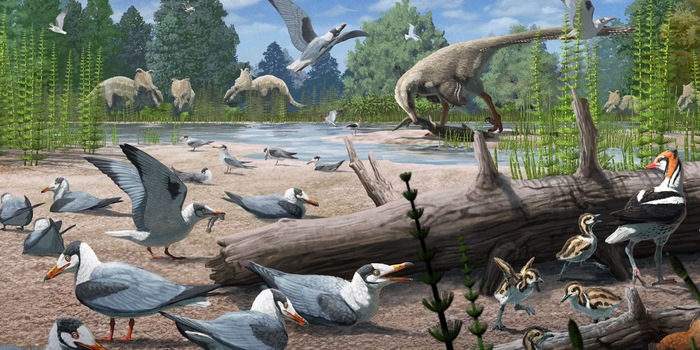
Be-Kind Protein Dark Chocolate Nuts
Nut, 12 pcs., 600 g

The Arctic is home to numerous birds. And this has been the case for millions of years. They colonised the region together with the dinosaurs.
In contrast, there are no remains of the Enantiornithes, another group of tooth-bearing birds that otherwise appear relatively frequently in Cretaceous fossil sites. It is possible that they lacked adaptations for life in cold parts of the world.
During the Cretaceous period, the site was much closer to the North Pole, and although the climate at the end of the Cretaceous period was much warmer than today and the North Pole was forested, there was probably snow there during the polar night. In addition, hibernating birds and dinosaurs had to endure six months of darkness. Although it is likely that at least some of the animals migrated southwards, conclusive evidence is still lacking.
We are partners of Spektrum der Wissenschaft and want to make well-founded information more accessible to you. Follow Spektrum der Wissenschaft if you like the articles
Originalartikel auf Spektrum.deExperts from science and research report on the latest findings in their fields – competent, authentic and comprehensible.
From the latest iPhone to the return of 80s fashion. The editorial team will help you make sense of it all.
Show allEvery spring, the Arctic breeding grounds of seabirds, waders and shorebirds echo with the calls of chicks: millions of animals come to the region from their wintering grounds in the south to benefit from the long daylight hours and the abundance of food. And the birds have obviously been doing this for much longer than previously thought: birds nested in the Arctic at least 73 million years ago and lived there side by side with dinosaurs. This is confirmed by bone findings by the team led by Lauren Wilson from Princeton University, which were presented in «Science».
This means that the fossils exceed previous evidence from polar latitudes by around 30 million years. These came from 40.5 to 46.5 million years ago from Seymour Island in the Southern Ocean. However, researchers had already surmised that birds had migrated to the high southern and northern latitudes earlier - after all, they emerged 150 million years ago. Wilson and Co therefore searched for bird tracks in the fossil deposit of the Prince Creek Formation in northern Alaska. Back in the Cretaceous period, the region formed an extensive coastal marshland in which, as fossil finds have shown, numerous dinosaurs lived.
In total, the team discovered around 50 remains of prehistoric birds, some of them tiny - including fragments of chicks or even unhatched embryos. Their bones have a sponge-like structure that was not yet fully grown. The analysis also revealed that they must have belonged to different species. They belonged to three different groups: the Ichthyornithes and Hesperornithiformes, which are considered early but not modern birds in the strict sense, and the Neornithes. The latter gave rise to today's birds. Ichthyornithes resembled today's gulls and terns, while Hesperornithiformes had strong adaptations to aquatic life, as can be found today in alcids or penguins. Both groups were typically characterised by teeth in their beaks.

Be-Kind Protein Dark Chocolate Nuts
Nut, 12 pcs., 600 g